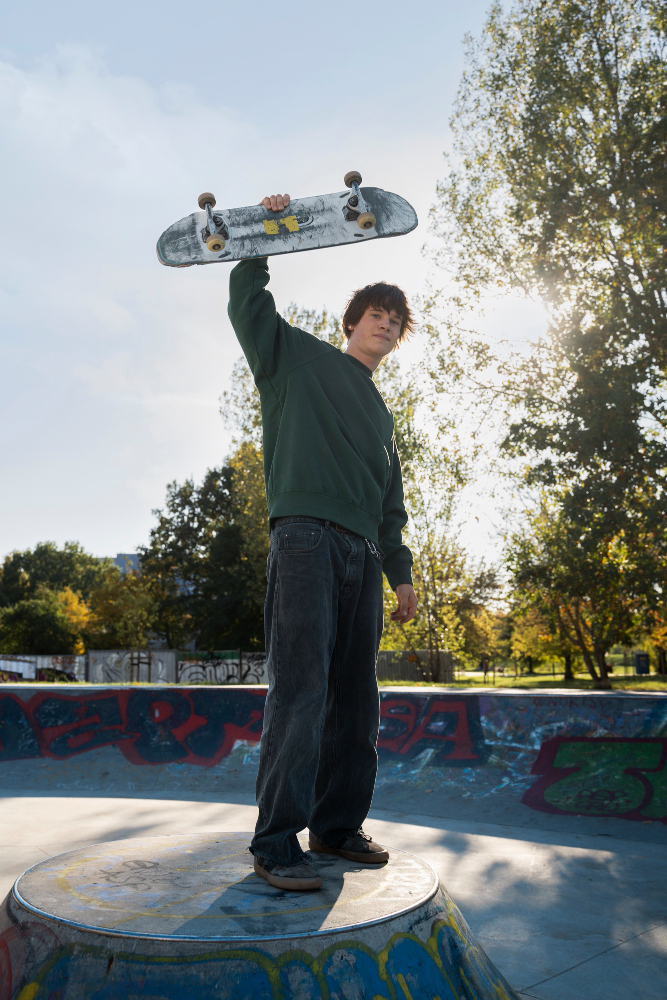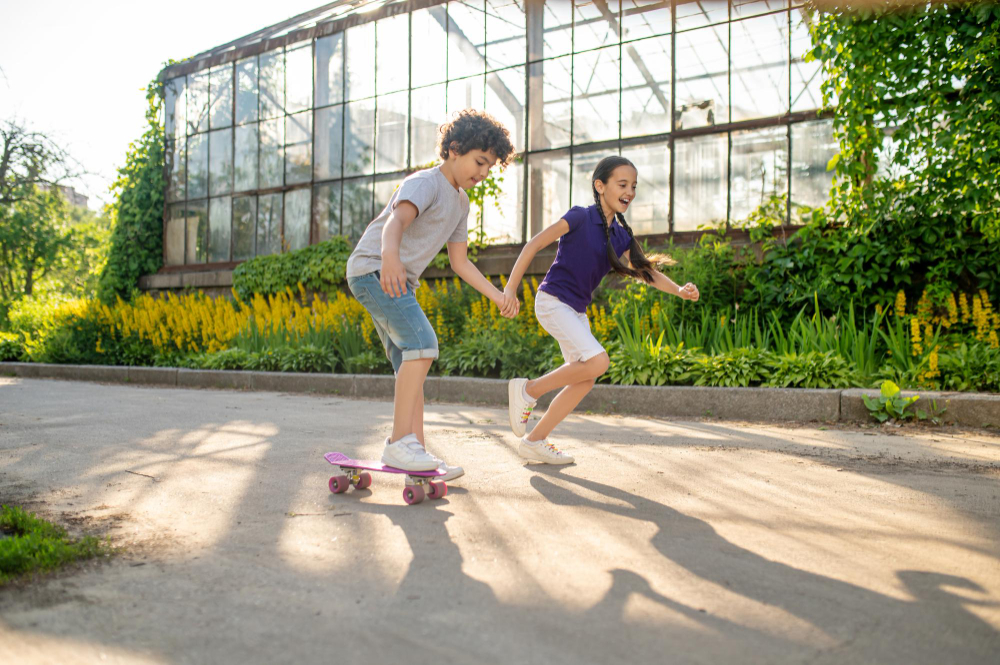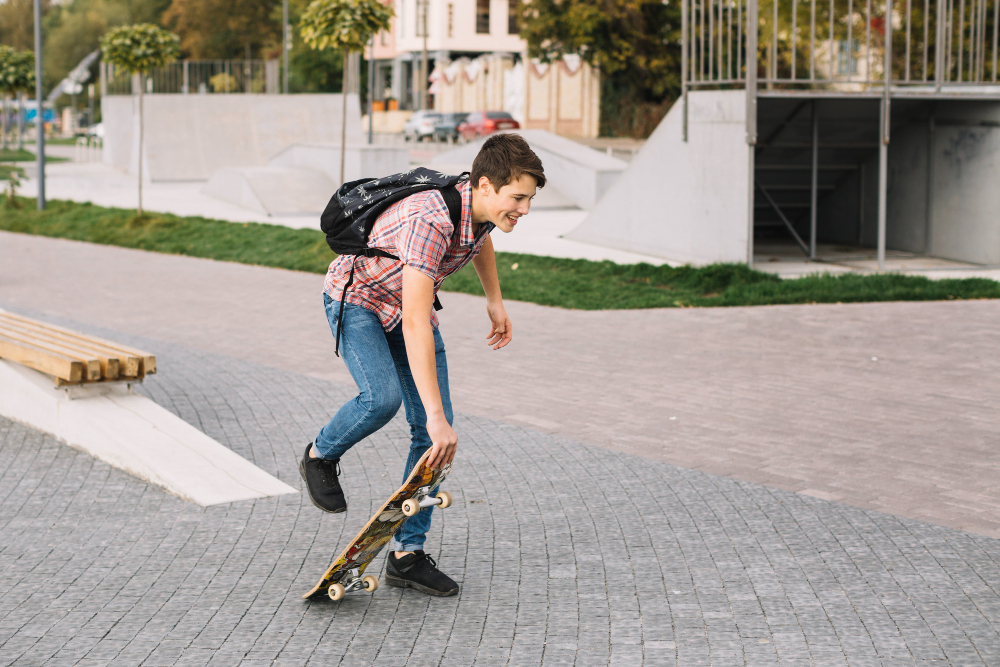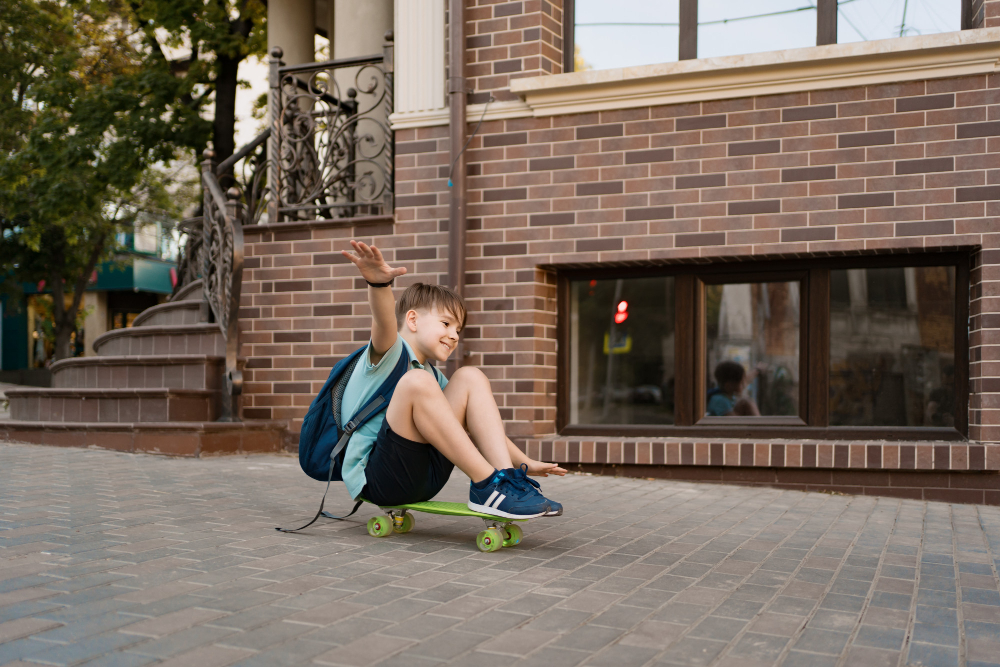Because falling down and getting back up is literally the point.
Some lessons are better learned in motion.
Resilience is one of them.
Ask any skater what they remember most when they started out and you’ll hear a familiar story:
Scraped knees. Bruised elbows. Frustration.
Then finally — the moment they landed a trick after the 50th attempt.
That pattern — fall, get back up, repeat — is more than just part of the sport. It’s a blueprint for life.
And in today’s world, where kids are growing up amid constant uncertainty, anxiety, and digital pressure, learning how to keep going when things get tough is more essential than ever.
Skateboarding might be one of the most underrated tools for building resilience — especially for kids who haven’t had many chances to grow it.
Why Resilience Matters (Now More Than Ever)
Across Canada and beyond, young people are facing what many call a resilience gap.
A 2019 CAMH (Centre for Addiction and Mental Health) study found that nearly 4 in 10 Ontario students experienced moderate-to-serious psychological distress.
Post-pandemic reports suggest those numbers have only gone up.
Meanwhile, kids are often shielded from failure — overprotected by systems meant to help. But here’s the truth:
Resilience isn’t something you’re born with. It’s a muscle.
And like any muscle, it grows through strain and recovery.
That’s where skateboarding comes in.
Skateboarding: A Built-In System for Emotional Growth
Skateboarding is built around failure.
No one nails their first ollie or kickflip. Sometimes not even the 100th.
But unlike school or sports with scores and rankings, skateboarding offers a rare thing:
Failure without shame.
You fall. You laugh. You try again.
And when you finally land it — no one did it for you. That moment belongs to you alone.
Backed by Research, Backed by Experience
A 2020 study by the University of Southern California and The Skatepark Project found that skateboarding builds:
- Self-regulation
- Stress relief
- A strong sense of autonomy
For kids who feel left out in traditional sports, skating provides a space where growth isn’t judged — it’s defined by personal progress.
And if you’re looking to support your young skater or beginner, tools that encourage safe, confidence-building practice at home can make a huge difference.
Skateboarding Teaches Grit — the Real Kind
Psychologist Angela Duckworth, who coined the term grit, says perseverance is a better predictor of success than intelligence or talent.
But how do we teach perseverance without forcing struggle?
Answer: safe failure.
In skateboarding, kids learn to take risks in a controlled environment.
No formal rules. No grades. Just a board, a space, and their own pace.
This self-paced challenge builds:
- Emotional regulation
- Frustration tolerance
- Long-term motivation
These are the foundations of emotional resilience.
Peer-Led Progress: Mentorship That Actually Works
Traditional authority doesn’t work for every kid. Especially not those in underserved communities.
That’s why peer-led programs like SkateCube Kids in Thornhill, Ontario, are changing the game.
Here, beginner skaters are paired with more experienced peers — not to chase perfection, but to support progress.
No whistles. No yelling. Just shared space and genuine support.
When a 12-year-old falls and a 16-year-old skates over to help them try again — that’s mentorship in motion.
Emotional Safety Is the Foundation

Resilience only grows in spaces where kids feel emotionally safe. That means:
- They’re not judged for failing
- They’re not shamed for trying
- They know someone nearby sees and supports them
Skateboarding communities built with care — like SkateCube’s workshops — create just that.
Where every wipeout is met with a high-five.
Where falling is part of the fun.
Where respect flows in every direction.
Identity on Wheels
One of skateboarding’s most powerful effects is how it reshapes a child’s self-image.
A kid once labeled “awkward” or “trouble” becomes:
- The one who cleared the stair set
- The one who helped someone drop in
- The one who keeps going
This shift isn’t just surface-level. It’s identity-deep.
The Science Is On Board Too
Movement matters.
Balance. Rhythm. Repetition. These don’t just train the body — they light up the brain.
A 2022 review in Frontiers in Psychology found that coordination-heavy activities like skating enhance:
- Cognitive flexibility
- Emotional resilience
- Impulse control
And when movement is paired with belonging? The mental health impact multiplies.
What Kids Learn From Skateboarding Sticks
Resilience isn’t about avoiding pain. It’s about what you do after it.
Kids who skateboard often carry those lessons into school, friendships, and beyond:
✅ I can handle discomfort
✅ I can improve at my own pace
✅ I can fall and still keep going
Ready to Support Their Ride?
If you’re looking to help a child discover skateboarding — or give them the tools to grow resilience on their terms — start with gear that encourages confidence.
Because resilience isn’t taught — it’s lived.
And every ride is a chance to learn how to get back up.
Keep pushing. Keep learning. Keep rolling.
Resilience is waiting at the bottom of the ramp.



